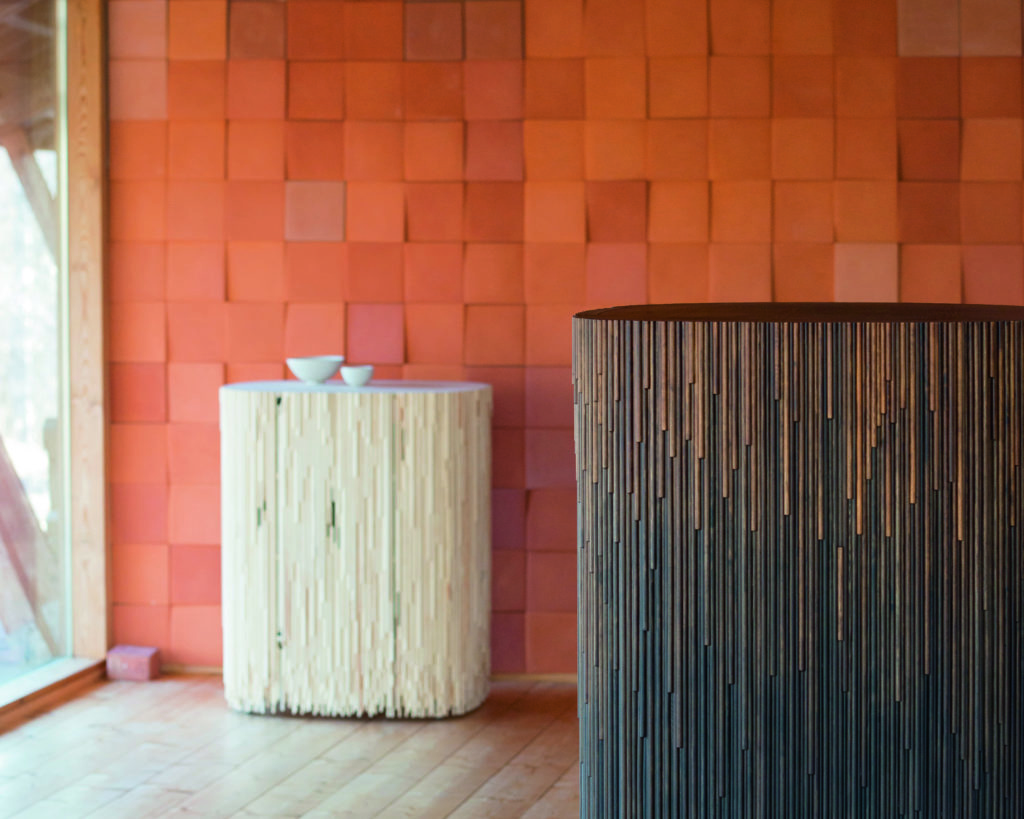Skilled with Wood

Master cabinetmaker Antrei Hartikainen utilises varied woodworking techniques in his furniture and household item designs, as well as his works of art. He was selected Young Designer of the Year in 2018, followed by being shortlisted for Emerging Designer of the Year by the international architecture and design magazine Dezeen in 2019.
Antrei Hartikainen, you are a master cabinetmaker and designer. What are your thoughts on the concept of crafts in this day and age?
I would say that it is difficult to determine all the aspects that are covered by the concept of crafts today. New methods of production and digital processing can also be assimilated as part of the concept, but to what extent this applies is purely a matter of interpretation. By definition, however, I don’t think that what counts as crafts has changed, as it still refers to making something by hand, either with the aid of tools or just by shaping a material with nothing but one’s hands. The tools and techniques have just become more diverse than in times past.
Even though the concept of crafts includes a very large group of fields that are purely professional or in which the number of amateur crafters is negligible, the first thing that always comes to my mind when I hear the word ‘crafts’ is a leisure activity. In some contexts, the use of the word does have a somewhat dismissive clang.

Today, design is a widely used concept and has even become quite commercial. How have the more traditional woodworking skills and, for example, knowledge of a specific material shaped your views on design?
My own work is based precisely on knowing the material and on basic carpentry. This has also made my approach to design very material-oriented and genuine. I seek to strike a balance between revering and challenging the material. In my view, one has to know the material and master the techniques well enough to be able to first go perhaps even a little too far in the challenging and then retreat the necessary distance backwards. It is only through trial and error that you can discover the essence of a given material – and to do it in a way that fits your own working methods and design language.
Finland has strong wood construction traditions, and the vernacular building practices, for instance, have traditionally not been about design and architecture, but rather about spaces and items made to serve a purpose. Do you see yourself playing some role in this continuum?
To a degree, yes. My own methods and principles of working are a clear continuum of this tradition. As an exception, however, my work doesn’t include only utility articles and furniture, but also pieces with no clear use. In addition, aesthetics hold the defining role in several of the products instead of functionality.

Some well-known architects have also been trained in carpentry. What is your personal relationship with architecture?
For a time during my childhood and teens, I even dreamed of becoming an architect. At the time, it was largely to do with my interest in drawing. In the end, however, I proceeded towards design of a smaller scale and more detail.
In my everyday life and during travels, I pay a lot of attention to buildings and pick out interesting details here and there. At museums and galleries, I often spend more time gazing at the beautiful spaces than the actual works on display.
I have a great admiration for architecture and for the diversity of knowhow it takes to design a whole that works aesthetically, practically and structurally. My interest in architecture is also often communicated in my own work. I examine spaces and environments keeping in mind my works and pieces of furniture, studying how they would fit in and merge as part of the whole. ↙